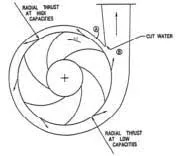Mobile:+86-311-808-126-83
Email:info@ydcastings.com
Transforming 3D Prints into High-Quality Aluminum Castings for Innovative Manufacturing Solutions
From 3D Printing to Aluminum Casting Transforming Concepts into Reality
In the ever-evolving landscape of modern manufacturing, the convergence of traditional techniques and cutting-edge technology has paved the way for innovative practices. A fascinating development in this domain is the integration of 3D printing and aluminum casting. This combination not only enhances production efficiency but also allows for the creation of complex geometries that were once unimaginable. In this article, we will explore the process, benefits, and applications of moving from 3D printing to aluminum casting.
Understanding the Basics
3D printing, also known as additive manufacturing, involves creating a three-dimensional object layer by layer from digital models. This process has revolutionized various industries by accelerating prototyping, reducing waste, and offering unprecedented design freedom. On the other hand, aluminum casting is a well-established process that involves pouring molten aluminum into molds to create parts and components. The synergy between these two methods can lead to highly efficient production workflows.
The Synergy of 3D Printing and Aluminum Casting
The journey from 3D printing to aluminum casting typically starts with the creation of a 3D printed pattern. This pattern serves as a prototype for the subsequent casting process. Using 3D printing, manufacturers can produce intricate designs that would be difficult or impossible to achieve with traditional machining methods. The precision of 3D printing allows for tight tolerances and unique features, which are crucial in industries such as aerospace, automotive, and healthcare.
Once the 3D pattern is created, it is used to form a mold. This mold can be constructed in various ways, but typically, it is made from sand or other suitable materials that can withstand the pouring of molten aluminum. The rapid prototyping phase enabled by 3D printing dramatically decreases the overall lead time for producing molds, making the process more agile and adaptable to changing demands.
Benefits of the Combined Approach
1. Design Freedom One of the primary advantages of integrating 3D printing with aluminum casting is the freedom it offers in design. Manufacturers can create complex geometries that reduce the weight of components while maintaining strength. This is particularly beneficial in industries where weight reduction directly correlates to performance, such as aerospace.
2. Reduced Lead Time The conventional mold-making process can be lengthy and resource-intensive. However, with 3D printing, companies can swiftly iterate designs, produce molds, and adapt them to specific production requirements. This agility leads to shorter production cycles and faster time-to-market.
3d print to aluminum casting

3. Cost Efficiency While the initial investment in 3D printing technology may be significant, the long-term cost benefits are substantial. Reduced material waste, decreased labor costs, and shorter production times collectively contribute to lower overall manufacturing expenses.
4. Customization In today’s market, the demand for customization is growing. The combination of 3D printing and aluminum casting allows for the manufacturing of tailored solutions that meet specific customer needs without the prohibitive costs associated with traditional custom fabrication techniques.
Applications in Industry
The move from 3D printing to aluminum casting has found applications across various sectors
- Aerospace Lightweight components that satisfy strict regulatory standards are crucial in aerospace. The combination enables manufacturers to produce parts that enhance fuel efficiency and performance.
- Automotive The automotive industry benefits from the ability to create complex components that improve safety and efficiency. The reduced weight of parts leads to better fuel economy.
- Healthcare Custom medical devices and prosthetics tailored to individual patients can be produced utilizing this combined approach, improving patient outcomes.
- Consumer Products Innovative consumer goods designers leverage this technology to create unique and aesthetically pleasing products that stand out in a crowded market.
Conclusion
The transformation from 3D printing to aluminum casting exemplifies the innovative spirit driving modern manufacturing. By integrating these two technologies, manufacturers unlock new possibilities in design, efficiency, and customization. As industries continue to evolve, the fusion of additive manufacturing and traditional casting processes will undoubtedly play a pivotal role in shaping the future of production, enabling unparalleled advancements that were once confined to the realm of imagination.
-
Why Should You Invest in Superior Pump Castings for Your Equipment?NewsJun.09,2025
-
Unlock Performance Potential with Stainless Impellers and Aluminum End CapsNewsJun.09,2025
-
Revolutionize Your Machinery with Superior Cast Iron and Aluminum ComponentsNewsJun.09,2025
-
Revolutionize Fluid Dynamics with Premium Pump ComponentsNewsJun.09,2025
-
Optimizing Industrial Systems with Essential Valve ComponentsNewsJun.09,2025
-
Elevate Grid Efficiency with High-Precision Power CastingsNewsJun.09,2025











